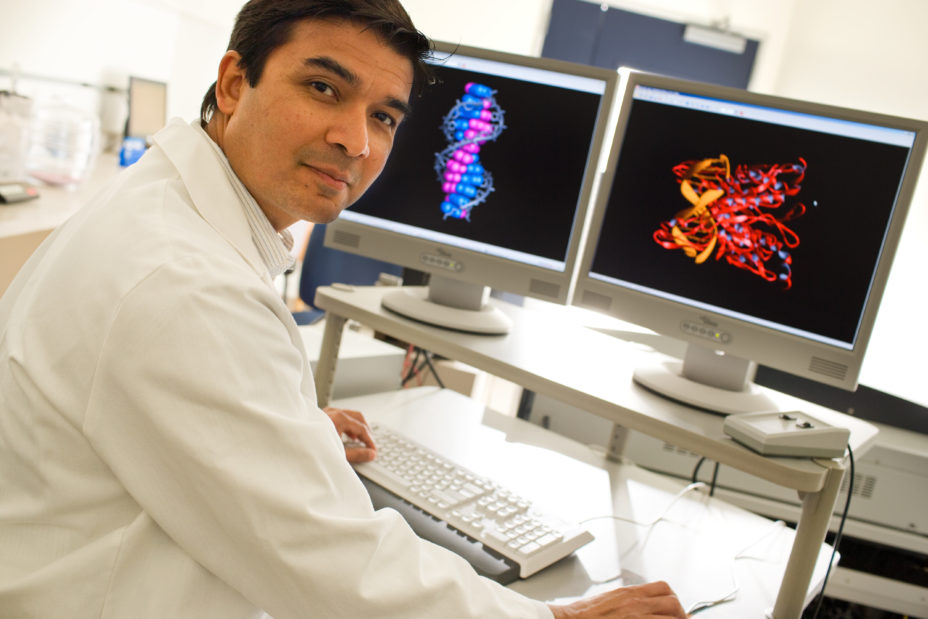$2.7 Million Research Grant to Develop Shoulder Tendon
Scripps Health has received a $2.7 million research grant from the California Institute for Regenerative Medicine (CIRM) to investigate the use of pluripotent stem cells to develop lab-grown tendon tissue for repairing rotator cuff injuries.
Funding will support the initiative’s discovery phase, to be conducted over the next three years at the Shiley Center for Orthopaedic Research and Education (SCORE) at Scripps Clinic on Torrey Pines Mesa. Researchers plan to develop a series of lab tests called assays to assess and measure the makeup of the tendon cells and develop the tendon material in the lab. They also will aim to demonstrate proof of concept by conducting tendon repair in animal models using the biologically engineered tendons.
The new approach is intended to particularly benefit older patients with large to massive rotator cuff tears resulting from degeneration over time. “For this group of patients, the failure rate for conventional repair surgery is about 40 percent,” said Darryl D’Lima, M.D, Ph.D., director of orthopedic research for SCORE at Scripps Clinic and the initiative’s lead investigator.
“We’ve reached our limit on how much we can improve things mechanically and through surgical technique, so now we need to explore novel biological approaches. This is a common injury, and as our population ages, there’s a pressing need to find new solutions.”
SCORE researchers plan to explore the possibility of transforming pluripotent stem cells into tendon-like cells, which would be embedded into a scaffold structure of “electrospun” fibers and grown into tendon tissue using bioreactors. The lab-engineered tendon tissue also would be stretched to help stimulate the cells to produce more tissue, and to help align the electrospun fibers so they mimic the intricate alignment of fibers in native tissue. Lining up the tendon fibers in the same direction that stretching occurs is needed to resist tensile force, or the stretching force experienced during motion.
Current surgical techniques to repair a torn rotator cuff involve reattaching the tendon to the head of the humerus, or upper arm bone. According to Dr. D’Lima, artificial and biological implants are sometimes used to augment the surgical reattachment, but none have been approved by the Food and Drug Administration to replace the tendon tissue that is lost in large tears.
The rotator cuff is a group of four muscles and their attached tendons, which hold the upper arm in place in the shoulder socket. The rotator cuff attaches the humerus to the shoulder blade and helps to lift and rotate the arm.
According to the American Academy of Orthopaedic Surgeons, most rotator cuff tears result from a natural degeneration of the tendon over time. These tears frequently cause pain and can limit use of the arm. As the condition progresses and worsens, the shoulder can become weaker, more painful and less useful. Nonsurgical treatments can relieve pain and improve function for many patients, but doctors may suggest surgery for those with persistent pain and who frequently use their arms for overhead work or sports.
The research team at SCORE at Scripps Clinic includes senior staff scientist Shawn Grogan, Ph.D., and staff engineer Erik Dorthe, M.S. The research is being conducted in collaboration with Hiroshi Asahara, Ph.D., professor of molecular medicine at the research lab of Martin Lotz, M.D., at Scripps Research. SCORE researcher Clifford Colwell Jr., M.D., and Scripps Clinic orthopedic surgeon Heinz Hoenecke, M.D., will advise on surgical technique and clinical translation of this technology.

Category: Education, Health & Fitness, Life Style, Local News, medical, Science, Technology







